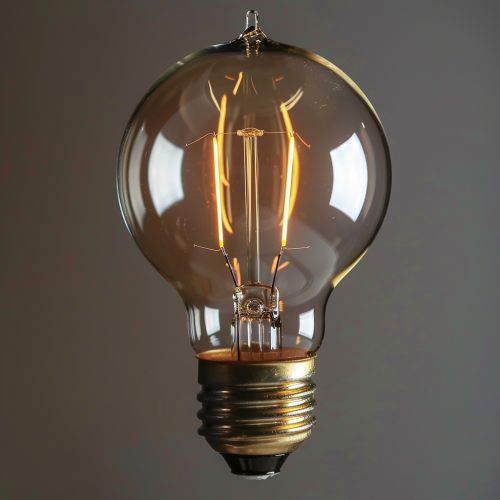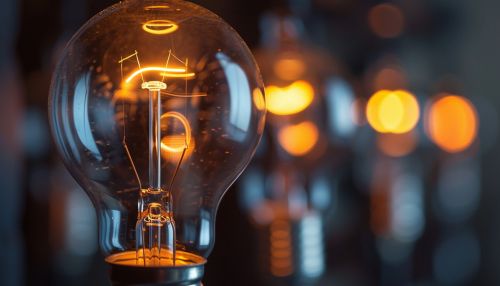Electric current
Introduction
Electric current is the flow of electric charges through a conductor. This flow is driven by an electric field, which is produced by a voltage difference across the conductor. The unit of electric current in the International System (SI) is the ampere (A).
Fundamental Concepts
Electric Charge
Electric charge is a fundamental property of matter. It is quantized, meaning it exists in discrete amounts. The smallest unit of charge is the charge of an electron, which is approximately -1.602 x 10^-19 coulombs. Charges can be either positive or negative, and like charges repel each other while opposite charges attract.
Electric Field
An electric field is a region in space where an electric charge experiences a force. The direction of the field is the direction of the force a positive charge would experience. The strength of the field is proportional to the force experienced per unit charge.
Voltage
Voltage, also known as electric potential difference, is the work done per unit charge to move a charge from one point to another in an electric field. It is measured in volts (V).
Types of Electric Current
There are two types of electric current: direct current (DC) and alternating current (AC).
Direct Current (DC)
Direct current (DC) is the unidirectional flow of electric charge. It is produced by sources such as batteries and fuel cells. In a DC circuit, the electric charges flow in a constant direction, and the voltage is constant over time.
Alternating Current (AC)
Alternating current (AC) is the flow of electric charge that periodically reverses direction. It is produced by generators and is used in power transmission because it can be easily transformed to different voltages.
Measurement of Electric Current
Electric current is measured using an instrument called an ammeter. The ammeter is connected in series with the circuit, and it measures the flow of charge in terms of amperes.
Effects of Electric Current
Electric current can have various effects, including heating, magnetic, chemical, and physiological effects.
Heating Effect
The heating effect of electric current is utilized in appliances such as electric heaters and incandescent light bulbs. When an electric current passes through a conductor, it encounters resistance, which generates heat.
Magnetic Effect
The magnetic effect of electric current is used in devices such as electromagnets and electric motors. When an electric current flows through a conductor, it generates a magnetic field around it.
Chemical Effect
The chemical effect of electric current is used in processes such as electroplating and electrolysis. When an electric current passes through a solution, it can cause chemical reactions to occur.
Physiological Effect
The physiological effect of electric current refers to the effect of electric current on living organisms. Small currents can cause muscle twitching, while larger currents can cause burns or even death.
Safety Considerations
Safety is a major concern when dealing with electric current. Overexposure to electric current can lead to injuries or even death. Therefore, it is important to follow safety guidelines when working with electricity.
See Also


